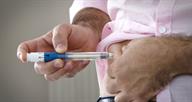ThisisPatientEngagementcontent
Insulin Treatment for Diabetes Mellitus
Learn more about our Patient Engagement products now! Turn your patients into active participants in their healthcare by giving them easy access to the same evidence-based information you trust – but delivered in an easy-to-understand format.

Insulin is either injected under the skin or inhaled into the lungs.
You may use more than one type of insulin. The different types are described below. It's important to know the onset, peak, and duration of the type of insulin you take.Insulin comes in different strengths. The most common strength is U-100, or 100 units per 1 mL of insulin. Make sure you're using the right strength of insulin with the right syringe.
Rapid-acting insulin:
Short-acting insulin:
Intermediate-acting insulin:
Long-acting insulin:
Concentrated insulin:
The concentration of insulin is the number of units of insulin in 1 milliliter (mL). Insulin vials and injection pens often have a concentration of 100 units in 1 mL (100 units/mL), which is called U-100.
Higher concentrations of insulin are also available. These are helpful for people who need high doses of insulin, usually more than 100 units per day. Concentrated insulin delivers the same amount of insulin but in a smaller volume.
Here are some examples of concentrated insulins:This information is not intended to replace advice given to you by your health care provider. Make sure you discuss any questions you have with your health care provider.
Cookies are used by this site. To decline or learn more, visit our cookie notice.
Copyright © 2025 Elsevier, its licensors, and contributors. All rights are reserved, including those for text and data mining, AI training, and similar technologies.